The Big Link- Self-regulation and Interoception
How interoception (one of our senses) links to self-regulation.
“I want to work on my (or my child’s) self regulation” is a phrase that I hear all the time from the adults, teens and parents of people I see everyday. Self-regulation is a big topic!
Self-regulation can be defined as being able to identify and manage how we feel (Mahler, 2019). Being able to read and understand our body signals is important, as it gives us information on emotions and we can use this information to do something about it.
Studies suggest that we can learn, practice and build our interoceptive awareness. An understanding of our body signals can inform us about our emotions and we can learn how to act on these feelings to help regulate ourselves.
How self-regulation and sensory processing come together…
Sensory processing is the way that a person perceives, processes, and organises the information that they receive through their senses. There are eight senses (and research is suggesting there may in fact be more) which include smell, sight, sound, touch, taste, vestibular (sense of head movement and balance), proprioceptive (sense of body and joints) and interoception (the ability to process information from our internal organs about our internal state).
Interoception helps the body “feel” the internal state or conditions of the body (Myles et al, 2014). Tiny receptors located in places inside and outside our bodies allow us to communicate this information through the spinal cord to the insula in our brains to receive information on what is happening in our bodies. The tiny receptors are located in areas such as our mouths, eyes, ears, skin, nose, brain, muscles, heart, stomach, skin, and bladder among other places. The insulae use the information to figure out and understand how we are feeling in our bodies. Sometimes signals from the body can be either too big or too small and it can be confusing to work out what is going on (or not notice at all). For example some people find it difficult to read body signal that they need to go to the toilet until it is very strong and then end up rushing to the toilet.
Understanding and reading our body signals can help us figure out how we are feeling – including both our affective emotions (like being happy, sad, angry etc) and emotions which prompt us to follow up/problem solve basic body needs (like feeling thirsty, hungry etc). The ability to recognise our body signals and link them with an emotion can be termed ‘interception awareness’ (Mahler, 2019).
What an OT session might look like when we are working on interoception awareness
Sessions exploring interoception awareness might start with an assessment of, or discussion around interoception awareness. Subsequent sessions might involve practical activities (sometimes described as mindful body awareness activities – www.education.sa.gov.au) that focus in on a certain body area (eg: eyes, ears, muscles) to help a person notice how our body parts feel during activities. For example, when focusing on the hand and fingers, we might squeeze a stress ball and concentrate what we notice in our hand and fingers (tense, tight etc). We might hold an ice pack for a short time (eg: 10 seconds) and see how this makes our hand/fingers feel. Other activities might include using a heart rate monitor then completing some activities that increase heart rate like walking up stairs or star jumps (if the person is very active). We might then complete some activities to reduce our heart rate.
After we complete a series of mindful body awareness activities (a number of sessions), we start to work on linking these sensations with a feeling. This is different for everyone. For example a dry mouth, combined with a ‘foggy head’ may mean that we are thirsty. Or a racing heart, a ‘hot feeling’ coming over my body might mean that we are anxious. In the case of a person who may not notice a need to use the toilet until ‘the last minute’, this may be able to better tune into their bladder signals and may start to notice our need to go to the toilet earlier. The last stage of the learning is to come up with actions that can assist with the emotions and help us to feel more regulated. This could involve getting a drink if we are thirsty, going to the bathroom, or in the case of affective emotions in having a toolbox of thinking, calming and sensory strategies to help us feel more comfortable. The sessions would try out a variety of tools and strategies to help identify what would work best for you and your unique personality and likes.
How do I get more info
- There is lots of helpful information on Kelly Mahler’s website on interoception here What is Interoception? - Kelly Mahler (kelly-mahler.com)
- You could also check out: Blog - The Pocket OT
- For teachers out there: Applying interoception skills in the classroom (education.sa.gov.au)
By Rebecca Clerehan (OT)
References
Government of South Australia, Department for Education (2019), Ready to learn interoception kit. Applying interoception skills in the classroom (education.sa.gov.au)
Koscinski, C. (2018) Interoception: how I feel: sensing my world from the inside out. Martin Publishing Services
Mahler, K; Rothschild, C; Alma, J (2019) My interoception workbook. A guide for adolescents, teens and adults. Kelly Mahler Publishing.
Mahler, K. (2015). Interoception – the eighth sensory system: practical solutions for improving self regulation, self awareness and social understanding of individuals with Autism Spectrum and Related Disorders: Shawnee Mission, KS: AAPC publishing.
Myles, B; Mahler, K; Robbins, L. (2014) Sensory Issues and High Functioning Autism Spectrum and Related Disorders: practical solutions for making sense of the world. Shawnee Mission, KS: PPPC Publishing.


